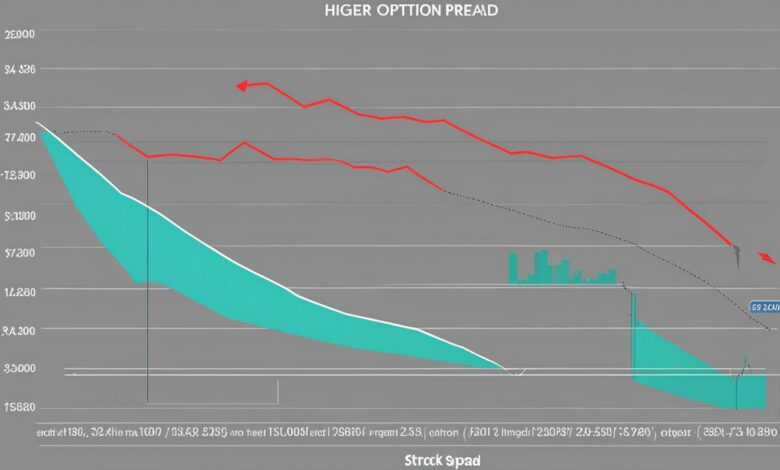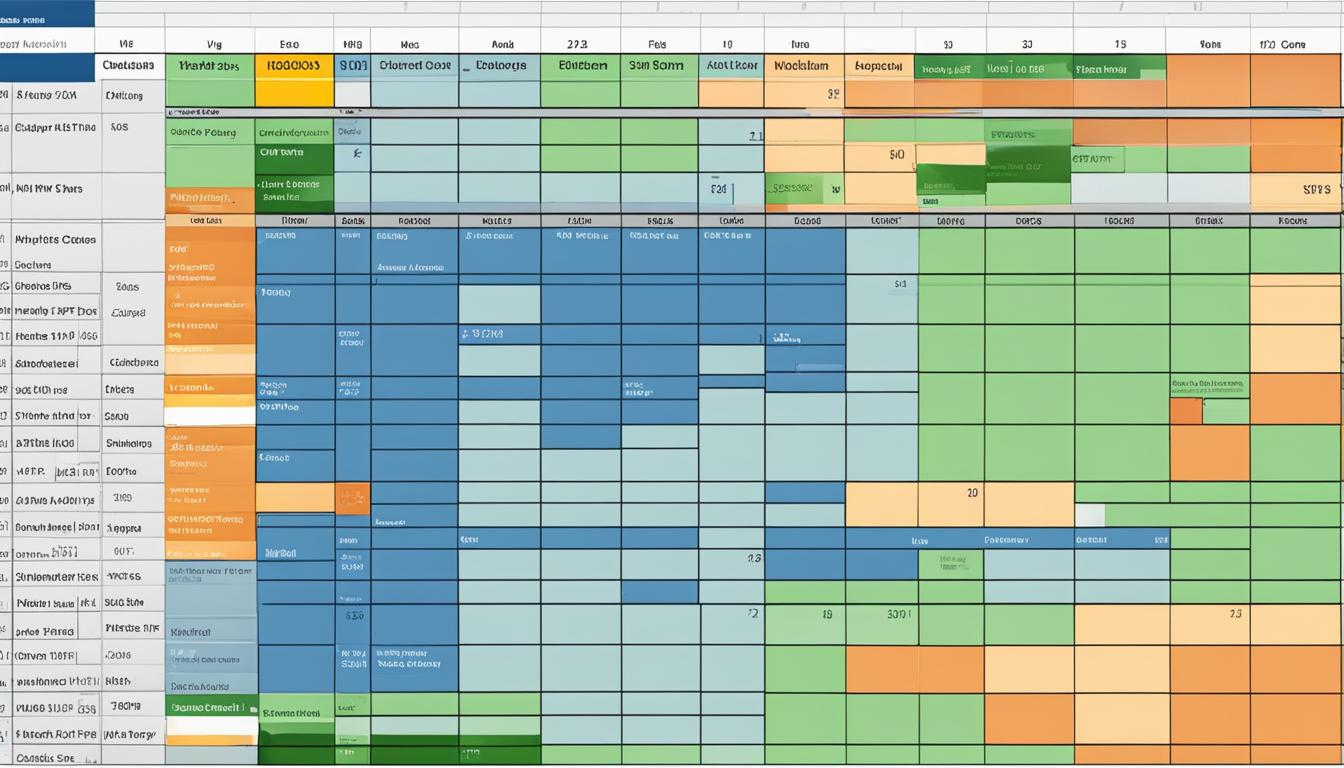Understanding Debit Spreads in Options Trading

As an investor or trader looking to diversify your strategies in the options market, understanding debit spreads is crucial. A debit spread is a fundamental approach that can help you manage risk while aiming for potential profits. Here’s what you need to know about debit spreads and how they work, including additional insights into their strategic value and comparison with credit spreads.
Key Takeaways:
- A debit spread involves buying and selling options of the same class with different strike prices.
- This strategy requires a net outflow of cash, resulting in a net debit to the trading account.
- Debit spreads can be used for speculation or hedging purposes.
- They provide a controlled-risk options strategy with defined profits and losses.
- Traders can participate in the directional movement of the underlying security while mitigating risk.
What is a Debit Spread?
A debit spread, also known as a net debit spread, is an options strategy that involves simultaneously buying and selling options of the same class (calls or puts) with different strike prices. The key characteristic of a debit spread is that it requires a net outflow of cash, or a “debit,” from your trading account. This happens because the option you buy (the long position) will typically have a higher premium than the option you sell (the short position).
How Do Debit Spreads Work?
- Buy a Lower-Strike Call/Put: You start by purchasing an option with a lower strike price, which costs more but gives you the right to buy (call) or sell (put) the underlying asset.
- Sell a Higher-Strike Call/Put: At the same time, you sell an option with a higher strike price, which is less expensive and helps offset the cost of the first option.
- Net Debit: The difference in premiums between the bought and sold options results in a net debit, meaning you pay more for the option you buy than you receive for the option you sell.
Calculating Potential Gains and Losses
- Maximum Loss: The maximum loss on a debit spread is limited to the initial debit paid to establish the position.
- Maximum Gain: The maximum gain is the difference between the strike prices minus the debit paid.
- Break-Even Point: To calculate the break-even point, add the net debit to the lower strike price for call spreads or subtract it from the higher strike price for put spreads.

Risk Management Benefits
Debit spreads offer defined risks, making them suitable for traders who prefer to know their maximum potential loss upfront. This risk-defined strategy ensures that traders can manage their exposure effectively, aligning with their risk tolerance.
Directional Bias and Strategy
Debit spreads allow traders to express a bullish or bearish view on the underlying security. By choosing specific strike prices, traders can align debit spreads with their market outlook, providing a strategic advantage over simply purchasing a long call or put.
Profit and Loss Potential
The profit potential of a debit spread is determined by the underlying stock price movement and time decay. These factors are crucial in calculating the financial implications of the strategy, including the capped profit potential and maximum loss.
Example
Let’s take a look at a simple example to understand how a debit spread option works.
| Strike Prices | Premium |
|---|---|
| Buy Call Option – $50 | $3.00 |
| Sell Call Option – $55 | $1.00 |
In this example, the trader buys a call option with a strike price of $50 and a premium of $3.00, while simultaneously selling a call option with a strike price of $55 and a premium of $1.00. The net debit paid to initiate the trade is $2.00 ($3.00 – $1.00).
If the underlying security’s price moves above the strike price of $55, the trader realizes a profit. However, the potential profit is limited to the difference between the strike prices ($55 – $50 = $5.00) minus the net debit paid ($5.00 – $2.00 = $3.00).

On the other hand, if the underlying security’s price remains below the strike price of $50, the trader incurs a loss. However, the potential loss is limited to the net debit paid, which in this case is $2.00.
By calculating the breakeven point and maximum profit based on the strike prices and the net debit paid, traders can better understand the potential outcomes of a debit spread option.
Overall, a debit spread option strategy offers traders the ability to control risk, limit losses, and potentially generate profits within a predefined range of price movements. However, it is essential to carefully consider strike prices, premium costs, and market conditions when implementing this strategy.
Comparison with Credit Spreads
- Initial Cash Flow: Debit spreads require paying a net premium, while credit spreads result in receiving a net premium.
- Directional Bias: Debit spreads are used when expecting a moderate move in the underlying asset’s price, whereas credit spreads are often employed when expecting the price to remain within a range.
- Profit and Loss: Both strategies have capped profits and losses, but credit spreads typically have a higher potential loss compared to the initial credit received.

Strategic Value of Debit Spreads
Debit spreads can be a strategic tool for expressing a clear bullish or bearish view on an underlying security. They offer a lower maximum loss compared to a long call or put, making them appealing to risk-averse traders. With a higher probability of profit, debit spreads can be adapted to different market conditions and volatility expectations.
| Feature | Debit Spread | Credit Spread |
|---|---|---|
| Cash Flow | Net outflow (debit) | Net inflow (credit) |
| Directional Bias | Moderate move expected | Price expected to stay within a range |
| Max Profit | Difference between strikes – net debit | Initial credit received |
| Max Loss | Initial debit paid | Higher than max profit |

Different Types of Debit Spreads
When it comes to trading debit spreads, there are various types that traders can utilize to suit their market outlook and risk tolerance. Let’s explore some of the most common debit spread strategies:
Bull Call Spreads
A bull call spread involves buying a lower strike call option and simultaneously selling a higher strike call option. This strategy is typically employed when the trader expects the underlying security’s price to rise moderately. By combining the purchase and sale of call options, traders can limit their initial cash outflow while still participating in the potential upside profits.
Bear Put Spreads
A bear put spread, on the other hand, entails buying a higher strike put option and selling a lower strike put option. This strategy is used when the trader anticipates a decline in the underlying security’s price. By implementing a bear put spread, traders can control their upfront investment while still benefiting from potential downside movements.
Other Types of Debit Spreads
Aside from bull call spreads and bear put spreads, there are additional debit spread strategies that traders can explore. These strategies may involve different combinations of strike prices and expiration dates to achieve specific risk-reward profiles. Traders can tailor their debit spreads to suit their individual preferences and market expectations.
To summarize, different types of debit spreads, such as bull call spreads, bear put spreads, and other variations, provide traders with various strategies to profit from directional moves in the underlying security. By understanding the nuances of each option spread, traders can select the most suitable strategy that aligns with their trading objectives.
Managing Volatility Risks
To manage volatility risks when trading debit spreads, traders can consider the following strategies:
- Monitor Option Prices: Keep a close eye on the prices of the options involved in the spread. Volatility can cause these prices to change rapidly, affecting the overall profitability of the trade.
- Adjust Strike Prices: Based on changes in volatility, it may be necessary to adjust the strike prices of the options to align with the current market conditions. This can help balance the risk and reward of the debit spread.
- Implement Stop-loss Orders: Consider setting stop-loss orders to automatically exit the trade if the price of the options reaches a predetermined level. This can help limit potential losses in the event of unexpected volatility.
By managing volatility risks effectively, traders can navigate the dynamic nature of the options market and increase their chances of success when trading debit spreads.
Best Practices for Trading Debit Spreads
When it comes to trading debit spreads, following best practices is crucial for success. By adopting these strategies, traders can improve their chances of making informed decisions and managing their risk effectively.
Thorough Research and Analysis
Before entering any trade, it is essential to conduct thorough research and analysis. This involves understanding the market conditions, evaluating the underlying security’s fundamentals, and identifying potential catalysts that may impact price movements. By staying informed, traders can make more informed decisions and identify profitable opportunities.
Careful Selection of Strike Prices and Expiration Dates
The selection of strike prices and expiration dates should be based on the desired risk-reward profile and volatility expectations. Traders need to consider their market outlook and choose options that align with their strategies. By carefully selecting these parameters, traders can optimize their risk-reward ratio and increase their chances of profitability.
Utilize Risk Management Tools
Risk management is essential in options trading, and debit spreads are no exception. Traders should consider using risk management tools such as stop-loss orders or position-sizing techniques to limit potential losses and protect capital. These tools help ensure that traders have predefined exit points and prevent losses from spiraling out of control.
Continual Monitoring and Adjustments
Market conditions are dynamic, and it is crucial to continually monitor and adjust trades as needed. Traders should stay vigilant, keeping an eye on price movements, market trends, and news that may impact their positions. By staying proactive, traders can make timely adjustments to their trades and adapt to changing market conditions.
In summary, following best practices is essential when trading debit spreads. Conducting thorough research, carefully selecting strike prices and expiration dates, utilizing risk management tools, and continually monitoring and adjusting trades are key to success in this options strategy.
Conclusion
Debit spreads are a strategic tool in options trading that can offer traders a way to express a directional view on the market with controlled risk. By understanding the mechanics, calculating potential outcomes, and considering the strategic value compared to other strategies like credit spreads, traders can effectively incorporate debit spreads into their trading repertoire.
Remember, while debit spreads can be a valuable part of your trading strategy, they are not without risks. It’s essential to thoroughly understand these instruments and consider your risk tolerance before engaging in options trading.







